Belarusian Food Dishes: Basic Overview
Common Ingredients
Common Cooking Methods
Courses
Meals
Key Taste
Eating Etiquette
Meal Presentation
Culinary Festivals
Influence and Fusion
Popular Types of Belarusian Dishes
-
Soups
These Belarusian soups range from clear, brothy types to thicker, creamier varieties, often incorporating a hearty mix of vegetables, meats, and sometimes legumes.
Characterized by their savory profiles, some also blend sweetness and tanginess, especially when ingredients like beets or sour cream are added.
-
Pancakes
Pancakes in Belarus can serve as both a breakfast item and a dessert.
Unlike the typical sweet pancakes, these often carry a savory note, made from ingredients like potatoes or cheese, and can be complemented with sweet or savory toppings.
The texture varies from crispy and golden on the outside to tender and soft within.
-
Dumplings
Dumplings in Belarusian cuisine feature soft, pillowy texture and satisfying fillings. The dough, thin and tender, encases a variety of hearty ingredients, from minced meats to mushrooms and cheese.
Often served with sour cream or broth, these dumplings are enjoyed as part of a family dinner or a festive gathering.
Belarusian dishes are deeply influenced by their Eastern European location and neighboring countries, like Russian culinary treasure , Polish epicurean specialties , Lithuanian gastronomic delights , and Ukrainian cuisine.
The cuisine heavily features potatoes in various forms, pork, and cereals like rye, especially in traditional bread-making. The simplicity of the cuisine highlights the use of local and seasonal ingredients, with “draniki” (potato pancakes) standing out as a favorite.
Soups are also fundamental, with “borsch” being a popular choice, reflecting the influence of Ukrainian delicacies. Cooking methods are simple, favoring boiling, stewing, and baking to preserve the natural taste of the ingredients.
The flavors tend toward savory and earthy, with a notable presence of sourness from fermented foods like pickles and sauerkraut, and dairy products such as sour cream and cottage cheese add a creamy texture to the dishes.
I’m diving into Belarusian cuisine, uncovering the secrets of its traditional dishes, their rise to global fame, and their health benefits. Along the way, I’ll also explore the rich history, dining customs, and the art of pairing dishes with the perfect drinks.
Let’s get started!
19 Popular Belarusian Dishes with Filters
Here are 19 most popular dishes from Belarusian cuisine, sorted according to how popular they are. The filtering option allows you to tailor your search by ingredients, flavors, culinary techniques, types of dishes, and meal occasions.
It’s great for unearthing everything from traditional classics and national staples to novel fusions, street food gems.
Draniki
- National
- Street Food
- Traditional
Draniki (often known as potato pancakes) is a national Belarusian dish made primarily from grated potatoes, which are then fried to create a crispy exterior with a soft, tender interior.
The taste of draniki is predominantly savory, with a delightful earthiness from the potatoes and a subtle hint of onion, often added to the batter for an extra layer of flavor.
While draniki is primarily served as a standalone dish, it also comes in various famous variations, including being stuffed with meat, mushrooms, or cheese. Draniki is particularly cherished during the celebration of Maslenitsa, a Slavic holiday marking the end of winter.
Borscht
- Street Food
- Traditional
Borscht is a traditional Belarusian dish and a staple of Eastern European cuisine. It is known for its vibrant ruby-red color from beetroot, which gives it a unique, slightly sweet, and earthy taste.
It’s more than just soup in Belarus; it represents the nation’s culinary heritage and is often enjoyed as a hearty meal. The flavor of borscht is a mix of savory, tart, and sweet, coming from a combination of beets, cabbage, potatoes, carrots, onions, and sometimes meat.
While the core recipe is consistent, many variations include adding beans, tomatoes, or a dollop of sour cream for creaminess and tang.
Olivier Salad
- Fusion
- Traditional
Olivier salad, or Russian salad, holds a unique position in Belarusian cuisine as a fusion dish that has been embraced as a traditional component of festive meals.
The salad is a colorful medley of diced potatoes, vegetables, eggs, and meat, bound together with mayonnaise, offering a creamy texture and a harmonious blend of sweet and tangy flavors.
This salad is especially synonymous with New Year’s celebrations and other festive gatherings in Belarus, where it is a staple on the holiday table.
Kalduny
- Traditional
Kalduny, or kolduny, is a cherished traditional Belarusian dish akin to stuffed dumplings in various cultures worldwide. These parcels are meticulously crafted with a thin dough shell, enveloping various savory fillings such as minced meat, mushrooms, or cottage cheese.
The taste of kalduny is rich and satisfying, with the dough providing a tender bite that complements the flavorful fillings. Among the famous variations, meat-filled kalduny are particularly beloved, often served with a dollop of sour cream to enhance their flavor.
Syrniki
- Fusion
- Street Food
- Traditional
Syrniki, also known as cheese pancakes, is a Belarusian fusion dish made from a soft, fresh cheese base, typically quark. Syrniki are lightly fried to achieve a crispy exterior with a melt-in-your-mouth, creamy interior.
The taste of Syrniki strikes a beautiful balance between sweetness and the slight tanginess of the cheese, often complemented with a sprinkle of sugar, a dollop of sour cream, or a spoonful of jam on the side.
Syrniki is a beloved breakfast item and a comforting dessert enjoyed by many on holiday breakfasts and family gatherings.
Babka
- Traditional
Babka is a savory potato-based loaf or pie from Belarusian cuisine. Unlike its sweet Polish and Jewish counterparts, the Belarusian babka is dense, hearty, and typically made by grating potatoes, mixing them with eggs, onions, and sometimes meat or bacon before baking in an oven.
The dish has a crispy exterior with a soft, moist interior, offering a rich and comforting taste. Babka is often enjoyed during family gatherings and on weekends.
Korovai
- Traditional
Korovai is a traditional Belarusian bread made with eggs and butter and sometimes with added flavors from fruits or nuts. The taste of korovai is rich and slightly sweet.
This bread is intricately decorated and typically served at weddings and major celebrations, symbolizing community, unity, and the blessing of the couple’s future together.
Chaladnik
- Traditional
Chaladnik is a cherished cold soup in Belarusian cuisine known for its tangy and creamy flavor. This dish blends kefir or soured milk with finely chopped vegetables such as beets, cucumbers, radishes, and dill.
A boiled egg and a dollop of sour cream are often added on top for extra richness. Chaladnik is particularly popular in the spring and summer, making it a common feature at seasonal family gatherings.
Blini
- Street Food
- Traditional
Blini, thin, crepe-like pancakes, are a versatile element of Belarusian cuisine, enjoyed both as a traditional dish and as a comfort food.
Made from unleavened or yeast-raised batter, blini can be served with a variety of fillings or toppings ranging from sweet (such as jam, honey, or fruits) to savory (such as caviar, smoked salmon, or sour cream).
The taste of Blini can vary widely depending on the fillings, offering a delightful experience from mildly sweet to richly savory.
While Blini are commonly enjoyed throughout the year, they hold particular significance during Maslenitsa, a Slavic holiday celebrating the end of winter and the arrival of spring.
This week-long festivity is known for its blini feasts, symbolizing the sun’s round, golden appearance.
Solyanka
- Traditional
Solyanka is a hearty Belarusian soup known for its complex and savory taste. It comes in various famous variations, including meat solyanka, fish solyanka, and mushroom solyanka, catering to different palates and preferences.
The distinctiveness of this soup lies in its dense, tangy flavor, achieved through a combination of ingredients such as smoked meats, pickles, olives, and a variety of vegetables.
Sorrel Soup
- Traditional
Sorrel soup, recognized in Belarusian cuisine as “shchavelya soup,” is a traditional dish cherished for its refreshingly tangy and slightly sour taste. It celebrates spring and summer flavors, featuring the vibrant, lemony sorrel leaves as the star ingredient.
This soup is often light and nourishing, perfect for warmer seasons. Variations of sorrel soup may include adding eggs, potatoes, and carrots, offering a delightful blend of textures and flavors.
Dressed Herring
- Traditional
Dressed herring, or “Herring under a Fur Coat,” is a traditional layered salad in Belarusian cuisine. This dish consists of salted herring covered with grated boiled vegetables, including potatoes, carrots, and beets, often finished with a generous coat of mayonnaise.
Its distinct layers resemble a fur coat, hence the name. Dressed herring boasts a unique combination of salty and creamy flavors, with a slight sweetness brought by the beets. It is particularly favored during New Year’s celebrations and other festive gatherings in Belarus.
Šakotis
- Traditional
Šakotis is a Belarusian towering, tree-like cake known for its spiky surface, created by the dripping batter during its unique cooking process. This delicacy, which shares its heritage with neighboring Lithuanian cuisine, has a gentle sweetness and a slightly crunchy texture.
Šakotis is often a centerpiece at significant celebrations, including weddings and major holidays, symbolizing prosperity and festive spirit. Its preparation is an art form, with variations in height and shape, though the traditional flavor remains beloved and constant.
Halušky
- Traditional
Halušky is a Belarusian dish comprising small, tender dumplings made primarily from a simple dough of potatoes and flour. Halušky is often served with a rich topping, such as creamy sauces or savory bits of pork fat, which complements its soft, pillowy texture.
The taste of Halušky is comforting and satisfying, with a delightful balance of the dumplings’ subtle flavor enhanced by the richness of its accompaniments.
Lazanki
- Traditional
Lazanki consists of small, flat pasta pieces mixed with sautéed cabbage, onions, and sometimes meat, such as pork or sausage.
The dish offers an interplay of textures and flavors, from the chewy bite of the pasta to the slight sweetness of the cabbage and the savory depth of the meat.
Though it’s enjoyed throughout the year, lazanki is particularly cherished during cold months for its hearty and warming qualities.
Zrazy
- Traditional
Zrazy is a delectable rolled meat delight filled with various stuffings. This dish, emanating from the noble tables of the Grand Duchy of Lithuania, has been seamlessly woven into the fabric of Belarusian culinary tradition.
The filling, consisting of breadcrumbs, mushrooms, eggs, and onions, brings a hearty and savory flavor to the tender meat exterior. Zrazy is celebrated for its versatility, with variations like potato zrazy, where mashed potato replaces meat, offering a vegetarian alternative.
Machanka
- Traditional
Machanka is a thick, hearty Belarusian stew made with pork, sausages, or sometimes even pancakes, machanka is a versatile dish known for its rich and creamy sauce, which is traditionally made from flour, fat, and sometimes kvass or beer.
This dish is a perfect blend of flavors, with a tangy and slightly sour taste that comes from the fermentation of the liquid ingredients.
Machanka is often enjoyed with thick slices of rye bread, making it a staple at Belarusian tables, especially during gatherings and celebrations.
Kletski
- Street Food
- Traditional
Kletski refers to Belarus dumplings, made from unleavened dough, which can be filled with a variety of ingredients, from meat to mushrooms, or even come unfilled, known as “lazy” kletski.
The taste of kletski varies with the filling, ranging from the savory depth of meat to the earthy, comforting tones of mushrooms or potatoes.
Kletski can be served in a broth as a warming soup or with sour cream. While kletski are enjoyed year-round, they hold a special place during family gatherings and traditional celebrations.
Smazhenka
- Street Food
Smazhenka is a type of small pizza originating from Belarusian cuisine. It is prepared using homemade or store-bought yeast dough as its base. The topping typically includes a mixture of tomato paste, finely cut basil, and finely chopped ham and grated cheese.
The smazhenka is then baked in a preheated oven until the dough is cooked and the cheese is melted and slightly golden. This dish can be a delightful snack or part of a larger meal, offering a taste of Belarusian flavors through its simple yet savory toppings.
What Is the History and Evolution of Belarusian Cuisine?
Belarusian cuisine offers a fascinating journey through the country’s rich history. Here is a breakdown of its evolution:
Next, let’s uncover the traditional dining etiquette observed in Belarusian meals.
What Is Belarusian Dining Etiquette?
Exploring Belarusian dining etiquette reveals a rich tradition of hospitality and shared meals, emphasizing the importance of connection and gratitude. Here’s a breakdown of its key aspects:
These etiquette practices lead us to explore the beverages that best complement Belarusian dishes, thereby enhancing the dining experience.
Which Beverages Best Complement Belarusian Dishes?
Here are the beverages that typically complement Belarusian dishes:
When pairing wholesome Belarusian beverages with dishes, consider the balance of flavors and the weight of the dish to choose a complementary drink that enhances the dining experience.
You will discover even more fascinating aspects of this country’s culture as you go further. I hope that the foods I’ve suggested will help you and your loved ones in your path to studying Belarusian culture. Leave a comment below to let me know what you think.













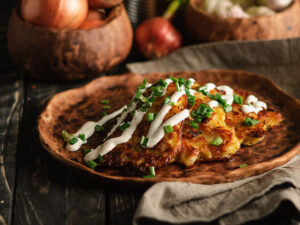
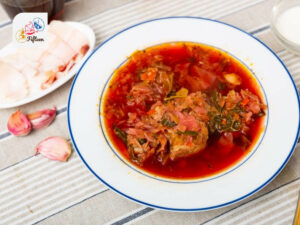

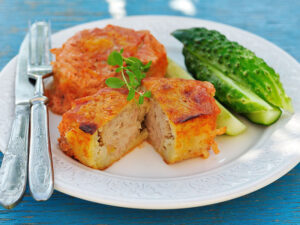

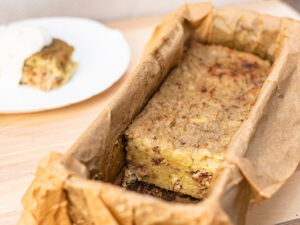
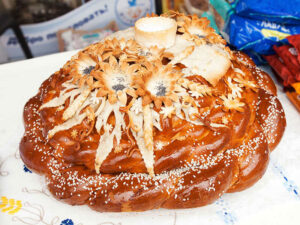
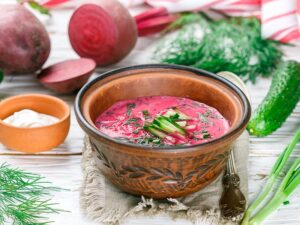
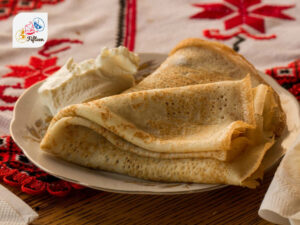
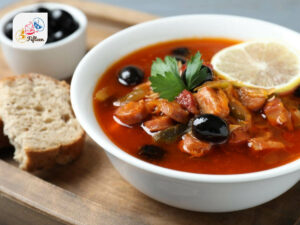
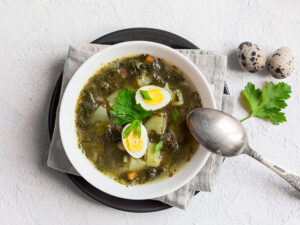
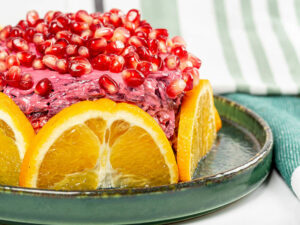
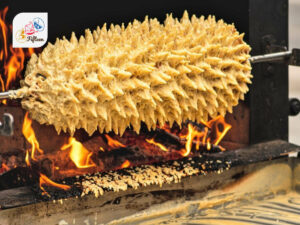
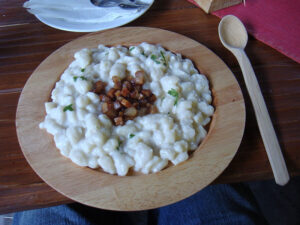
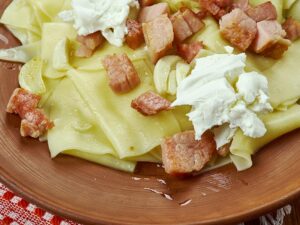

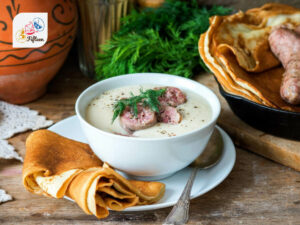
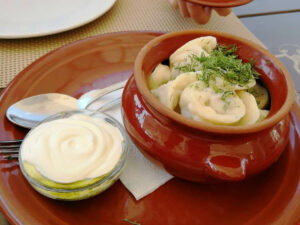


Jamie Scott
Editor in Chief, Senior Content Writer
Expertise
Home Cooking, Meal Planning, Recipe Development, Baking and Pastry, Food Editor, Cooking-video Maker, Western Food Evaluation Expert
Education
Le Cordon Bleu College of Culinary Arts
Local Community College, New York, NY
Jamie Scott is a skilled culinary expert and content creator specializing in Western cuisine. With over 15 years in the culinary field and formal training from Le Cordon Bleu, Paris, Jamie deeply understands how to blend nutrition with delicious flavors. His passion for cooking matches his commitment to making healthy eating accessible and enjoyable.
On Fifteen.net, Jamie brings a fresh perspective to classic dishes and beverages, offering readers insightful recipes, cooking tips, and a fresh view on meal planning that emphasizes taste, health, and simplicity.